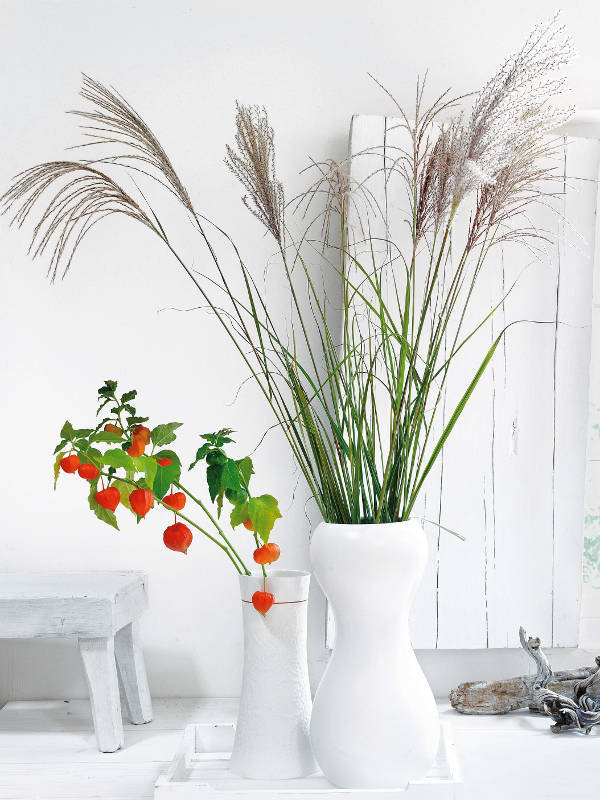I am grass obsessed, it is really hard for me to design a garden without them. I find them perfect for so many uses and I can easily rattle off a good one for just about any situation. So narrowing down 5 favorites is a little bit of a trick but here goes.

- Pennisetum alopecuroides (any variety) – Happy and neat little clumps of grassiness serve the same use (to me) as a small to medium boxwood ball — only they are not evergreen through the year. These plants are tidy bowl of everything I love about grasses – Soft touchable plumes for the seed-heads and graceful full flowing foliage that browns beautifully in the winter.
- Miscanthus giganteus – I can’t grow kitchsy Pampas Grass where I live (it’s too cold). But if I could I would. I would take it as a challenge to incorporate such a distinctively retro (it’s so 70’s/ 80’s to me) plant into a modern sophisticated landscape. But since Pampas grass is only really happy into zone 7/8 I must resort to the Miscanthus giganteus. This can be taller than pampas, and it is a bit more of a cross between corn stalks and bamboo but with grassy qualities. It is commonly grown as a bio fuel, but I find that it’s qualities of vigor, ease of growth and general giant-ness pretty useful. I’ve been using it to anchor things like outbuildings, barns and fence endings in the landscape. You can do the same with a house but be careful in dry areas, as it is very flammable once it dries and dies back in the winter. It borders on small-tree size and is quite distinctive but I use it as I would a large ornamental shrub.
- Miscanthus ‘Graziella’ – While I extol the ‘Graziella’ the reality I really love most miscanthus (except ‘zebrinus’ whose stripes, oddly, are not appealing to me). They range from ‘stricta’ – which is straight upright to the more gracefully shaped gracimillus which is like a pretty tapered vase for your garden. They are all about human height and are great for the mid to back of a planting group and provide excellent upright accents, hedging and screening. Super versatile!
- Carex ‘Comans Bronze’ – My rebellious side loves a plant that perplexes people. Carex ‘Comans Bronze’ does that. Its color challenges the notion of what is ‘living’ in the garden and many people think it is dead (because it is naturally deep russet brown). But it isn’t dead and when mixed with other dramatic foliage it is a really surprising star for a container garden or the front of a bed.
- Briza media – It is called Quaking Grass because the little oat-like pendants vibrate on thin stems in the slightest breeze. It is beautiful in meadows and wild gardens and also great for xeriscape settings. I love it with similarly airy plants like cosmos, verbena, and Coreopsis.
images: Pennisetum alopecuroides, miscanthus sinensis gracillimus with chinese lanterns – Miscanthus garcimillus, Miscanthus giganteus, Briza media, and Carex ‘Comans Bronze’ from Rustica.

I love these grasses! Especially the Carex, and I’m growing very fond of the Briza. I wondered if the picture #5 is actually Chasmanthium, though, based on the flower heads and wide leaves.
this was super helppful. I love the look of grasses but didnt really know how to use them. we recently bought a home on a neglected acre. altho I can picture it as fantastic, we dont have the finances for that. I am learning to think “big” and I can see these would be really great to help give it character. do they spread by seed? we have enough local weeds doing that!
I would suggest Pink Muhly (Muhlenbergia capillaris) as a contender for top garden grass. It’s hardy to zone 5, and so gorgous when topped with its pink plumes and back lit by the sun. and dought tolerant also…
Never thought grasses can be decorative! Those look really beautiful. Can these be grown indoors as well?